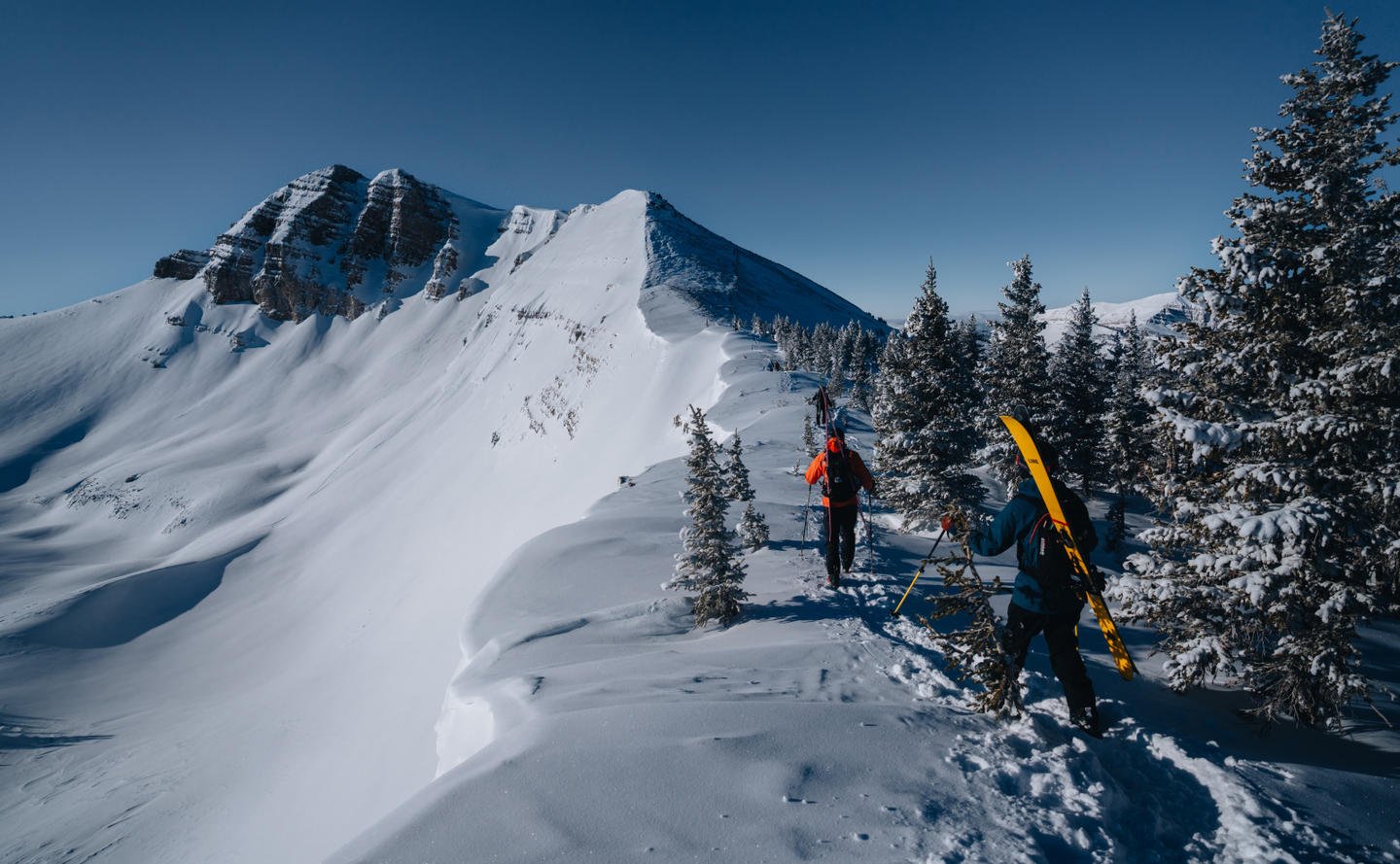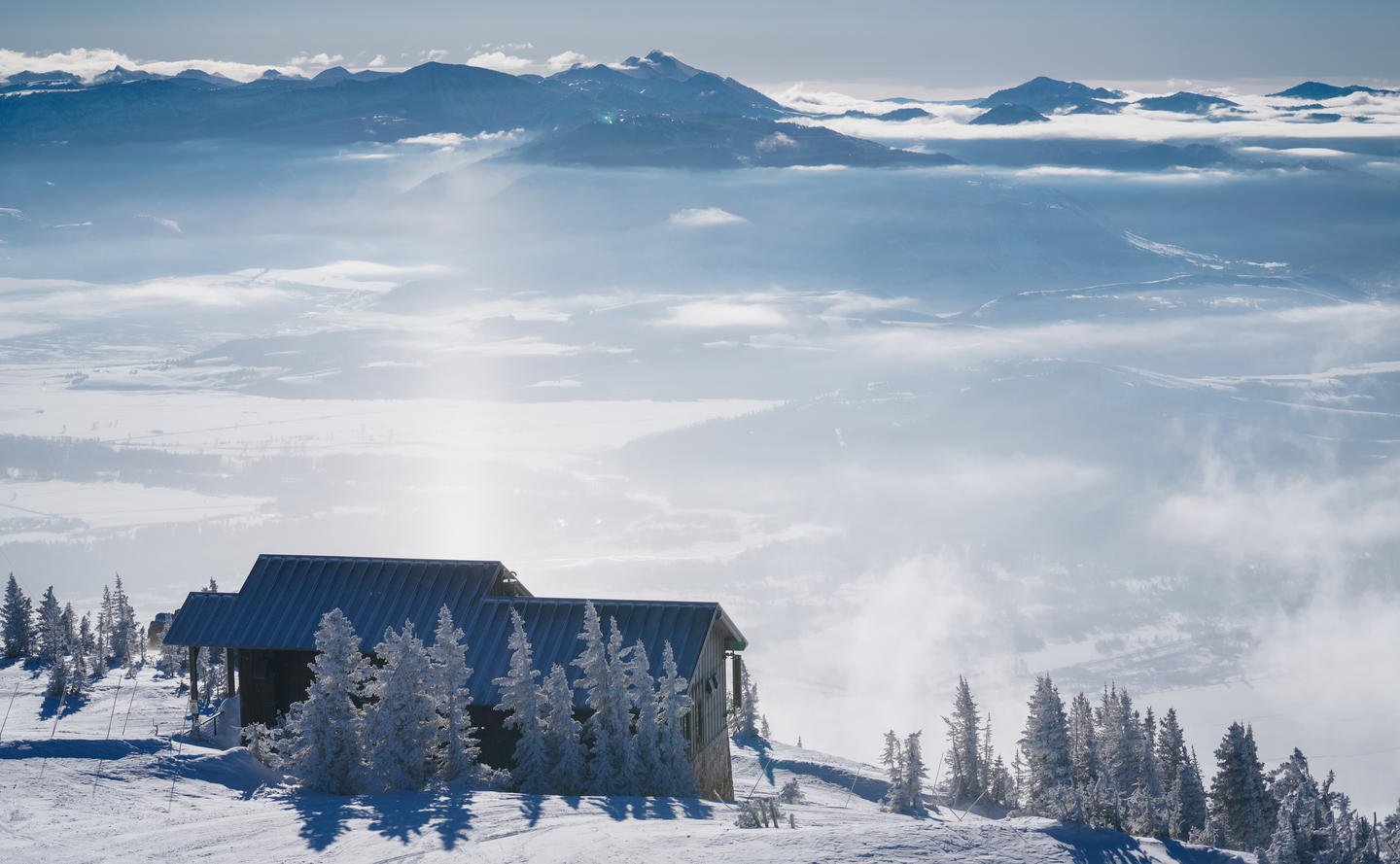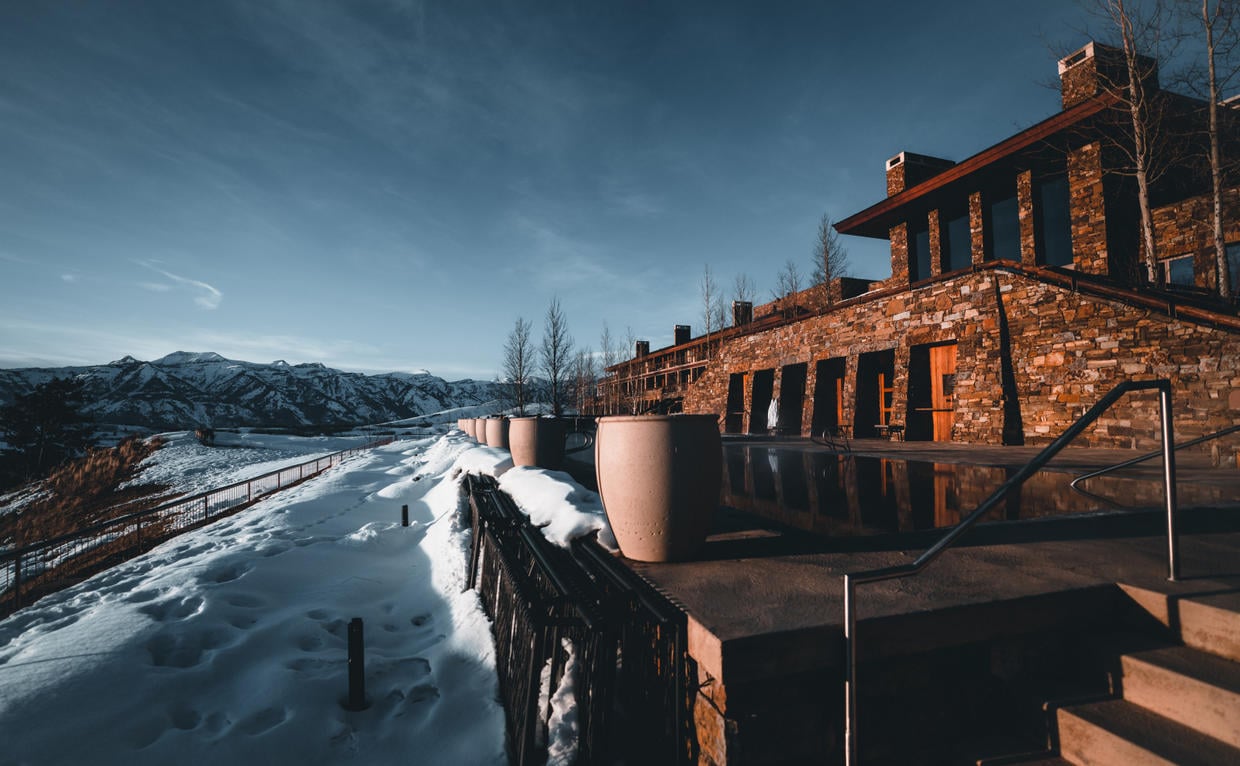As we ventured further from Amangani's warm enfold, the outside temperature read -17 degrees Fahrenheit. Steam rose from the Snake River. “That is not a warm river,” said Whiteford. As a child, our guide, Whiteford, had learned to carve ski turns on 465 vertical feet of frozen marble at his local hill in Blandford, Massachusetts. Like so many others before him, he abandoned a promising career on Wall Street for the lure of adventure in the big mountains out west. Soon, with a series of videos, and by dancing with astonishing grace down extreme-consequence lines, he had earned a level of respect not lightly granted among serious skiers - skiers who visited Amangani for the adventure it promised and to take on pilgrimages like ours.
The Greater Yellowstone Ecosystem, as it’s known, comprises some 22 million acres of wild landscape, an area more than twice the size of Switzerland. It is one of the largest temperate-zone ecosystems on earth. At its core are Yellowstone and Grand Teton National Parks, buffered somewhat imperfectly from the insatiable appetites of humankind by five national forests, three national wildlife refuges, and a patchwork of other federal, state, and tribal lands. “This place is more ecologically intact today,” Andrew explained, “than at any time in the last 200 years.”













